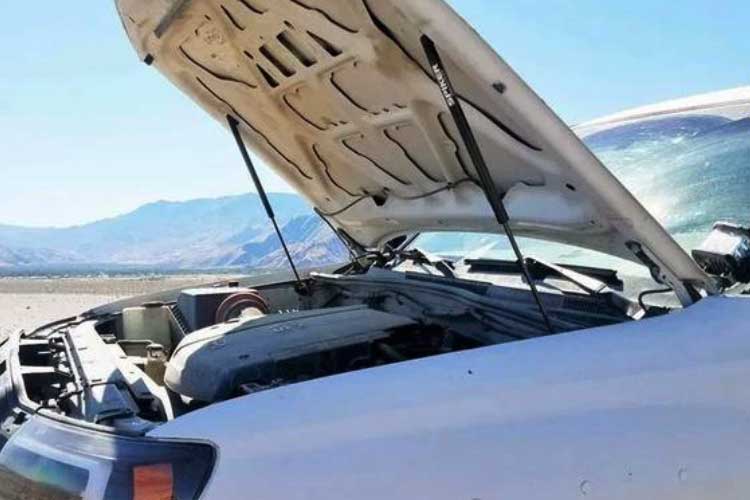You might have experienced smoke from under the hood and your engine overheating while driving. Worry not; you can work through this problem with the necessary knowledge of its cause.
So, why is my car overheating and smoking? Your vehicle is overheating and smoking due to problems associated with the coolant system, radiator, and engine oil. Also, it might be due to a faulty thermal sensor, low coolant levels and leakages along the hoses.
This article gives a detailed report on the causes and possible solutions of car overheating and smoking. In addition, the article covers some hacks to practice to avoid overheating problems.
Car Overheating And Smoking – Causes And Possible Solutions
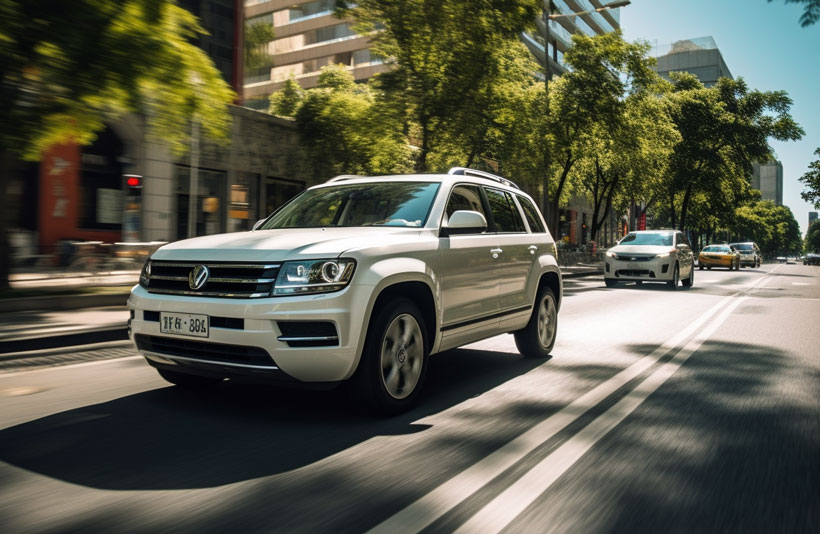
Here is a summary of the causes of your car overheating and smoking and solutions to fix the problem.
| Problem causing overheating and smoking | How to fix |
| 1. Low coolant levels | Top-up with the recommended coolant fluid |
| Repair any leaking points on the cooling system | |
| 2. Damaged thermal sensor | Replace the damaged sensor |
| 3. Poor air ventilation | Ensure proper ventilation under the hood |
| Unblock the clogged air hoses | |
| 4. Damaged radiator | Repair or replace the damaged radiator |
| Unblock the clogged hoses | |
| 5. Overused or low levels of engine oil | Top-up the engine oil |
| Replace engine oil if overused | |
| 6. Damaged AC system | Repair or replace the damaged AC system |
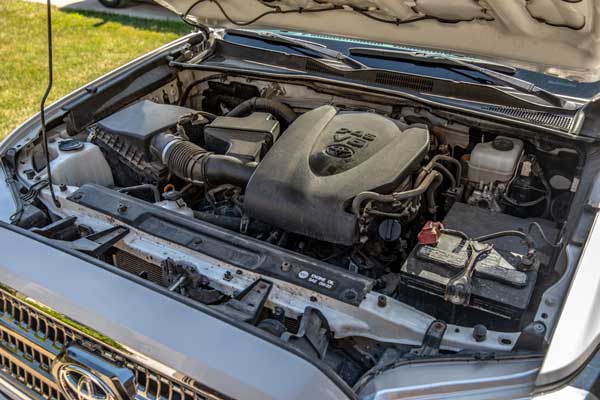
Why Is My Car Overheating And Smoking? – Explained!
An overheating car results in smoking and frequent boiling of the coolant. If your car has a faulty cooling system, you will experience more cases, especially after long distances. The good news is that you can fix these problems and enjoy a stress-free ride.
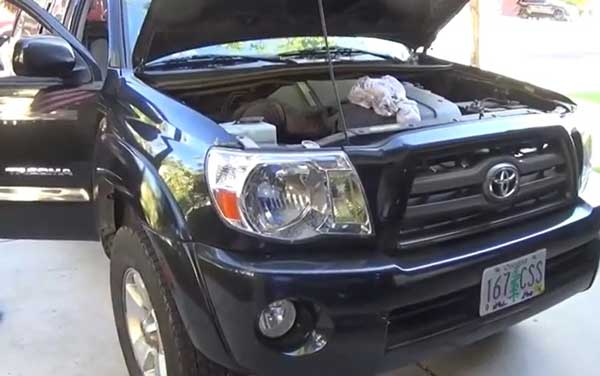
Here is a detailed review of the causes of your car overheating and smoking with the possible solutions to fix them.
1. Low Coolant Levels
A running engine generates a lot of heat from the combustion of air-fuel and the movement of pistons. The heat generated, if not regulated, can cause overheating and smoking. In this case, engine coolants help cool the engine to less dangerous temperatures.
So, when the coolant levels drop below the standard, the cooling effect is reduced and raises the engine’s temperatures. In most cases, the remaining coolant boils and leaks as vapor through the filler cap.
The smoke smell is pungent and robust and hence can easily be detected. You may have your car overheating and smoking if your coolant leaks, reducing its level in the reservoir.
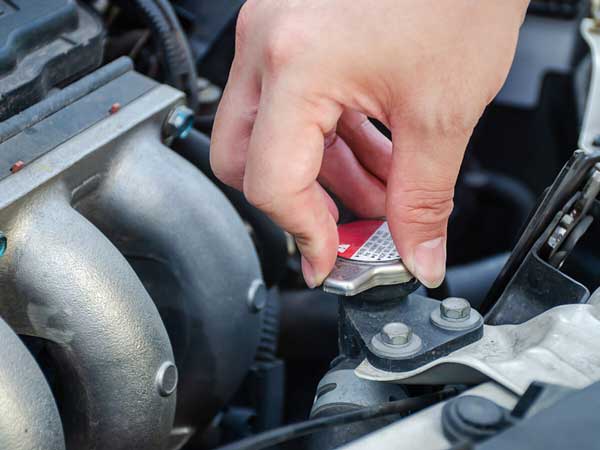
Solution
Top the coolant with the recommended type from the manufacturer’s manual guide. You can consult a mechanic for information on the best engine coolant that will last longer and be in good condition.
Repair the leaking hoses or replace them if damaged beyond repair. Check for any clogged or blocked pipes that may hinder the proper flow of the coolant.
2. Damaged Thermal Sensor
A thermal sensor detects the vehicle’s temperature and sends a signal to the computer system for the temperature light to illuminate accordingly. The sensor remains stable when the engine’s temperature is at standard levels.
So, an increase in heat above the limit causes the temperature light on the dashboard to illuminate, indicating the need to turn on the AC. But no heat changes are detected if the thermal sensor is damaged, leading to overheating and smoking.
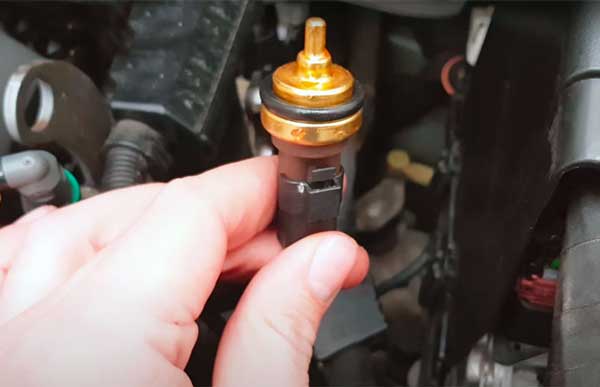
Solution
A blown-out thermal sensor can hardly be repaired and needs to be replaced with an exact sensor that corresponds with the car’s OEM parts. To avoid damaged sensors, ensure to seal them from water and fluids
3. Poor Air Ventilation
Air-cooling vehicles depend on the free flow of air around the engine to cool the engine system. The fans in the radiator facilitate the same by blowing in cold air from outside through the air filters.
So, poor ventilation around the engine causes an accumulation of hot air that causes overheating and smoking. Blocked air filters and hoses reduce the amount of cold air blown into the machine.
Solution
Unblock the clogged hoses and clean air filters regularly to ensure maximum airflow. Avoid stacking unnecessary materials on the engine for proper air ventilation and circulation.
Check to ensure the fan and blowers are functioning correctly.
4. Damaged Radiator
Radiators play an essential role in cooling the car when in AC mode. It passes cool air to the engine keeping its temperatures regulated. The radiator fins and hoses get blocked by the dirt and dust trapped in the incoming air.
Likewise, when in AC mode, the fans blow in the cold air from outside, cooling the vehicle and the engine. Failure to pass cold air in sufficient amounts leads to car overheating and smoking from the burning effect on some parts of the engine.
Solution
Unblock the clogged pipes to allow sufficient airflow. Service the radiator frequently to clean any dirt and dust trapped in it. For the damaged radiator, repair it accordingly or replace it with exact OEM spare parts.
5. Overused Or Low Levels Of Engine Oil
The engine oil is used to lubricate the engine’s moving parts and regulate the engine’s temperature. As the oil flows through the engine parts, it absorbs excess heat and releases it to the environment.
Low engine oil levels reduce the amount of heat transferred, causing overheating of the engine. If the oil has been used for a long, it loses its functionality value and no longer helps to cool the engine.
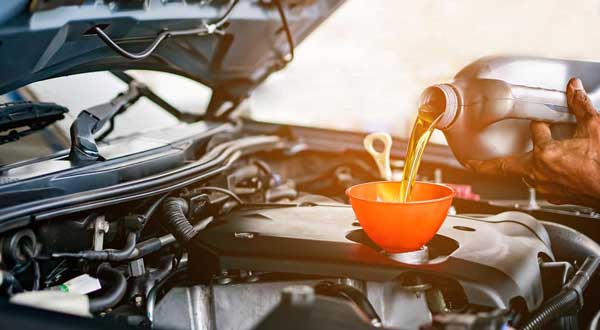
Solution
Top-up the engine oil to standard levels for efficient cooling. Empty the overused engine oil and clean the reservoir before refilling it. Also, check for any leaking points and repair or replace them accordingly.
6. Damaged AC System
The AC system helps cool the engine by regulating the temperatures from the heat generated by the engine. When the AC is turned on, it allows cold air to be blown in by the blowers. The air passes through the air filters that trap dirt as it proceeds to cool the engine.
So, a faulty AC system blows in hot air, indicating a problem with the AC system parts.
Solution
Repair or replace the faulty parts along the AC system. Check for any blocked hoses and air filters and unclog them. Then inspect the electrical wiring that powers the AC system for any anomalies and rectify them accordingly.
Why Is My Car Smoking Without Overheating?
Though rare, you may notice your car has smoke coming from under the hood without the temperature light illuminating. Such indicates that the cooling system is functioning correctly, but there is an external heating problem. Below are the probable causes of car smoking.
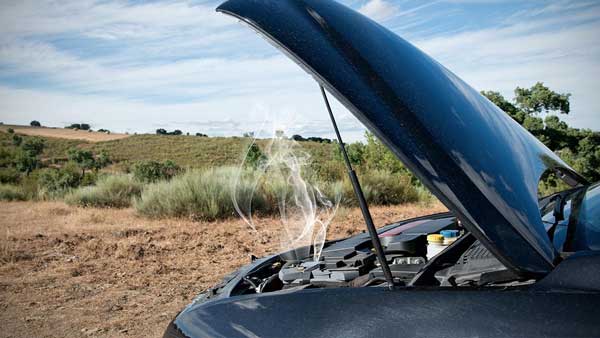
1. Worn-out Piston Rings
If the piston rings and valves are worn out, the piston comes into contact with the cylinders leading to heat generation due to friction. The resultant impact on the worn-out cylinder is mixing fuel with oil, which produces blue smoke.
2. Worn-out Head Gaskets
Worn-out head gaskets allow the engine oil and fuel to mix. Combustion of fuel and oil mixture results in smoke production due to the raised octane levels. Thus, the impure combustion results in the emission of blue smoke with a strong, pungent smell from the exhaust.
3. Damaged Electrical Wiring
Naked electrical cables come in contact resulting in short circuits that blow the wiring system. Thus, the coating burns to produce smoke seen escaping from under the hood.
Therefore, wiring cables should be well insulated and connected to avoid getting blown out. Also, keep the wiring system pinned away from the engine block using hooks and pins.
How To Avoid Overheating And Smoking Problems In The Future?
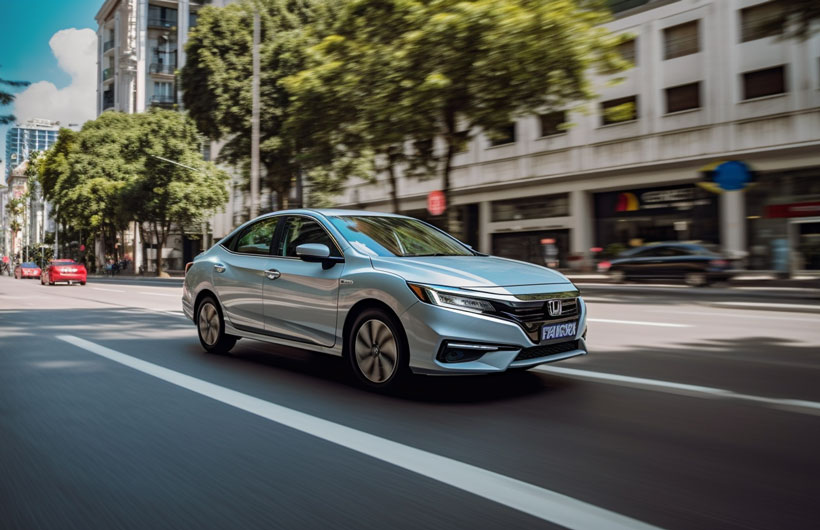
To avoid overheating and smoking issues with your car, consider practicing the following;
- Inspect the water and coolant levels in the reservoir before embarking on a long-distance journey
- Perform regular servicing of the vehicle to detect leakages and faulty parts in advance
- Have the air filters and fans cleaned after driving on a dusty road
- Avoid topping up coolants and engine oil on the old one, as it reduces the quality of the new refill

FAQs
Below is the section for frequently asked questions-
The white smoke results from the combustion of fuel mixed with water. Worn-out head gaskets cause this due to overheating. Replace the head gasket and fix the overheating problem to avoid such issues in the future.
The average time for the engine to cool down after overheating ranges between 15 to 20 minutes. However, you can extend the time to allow the engine to cool more.
The common problem is leakage of the coolant or antifreeze. Once the coolant touches the hot engine block, it evaporates and escapes as smoke. Fix the leaking points and ensure tight seals on the filler cap.
Conclusion
To wrap it up, car overheating and smoking problems arise from faulty cooling systems or low levels of coolants and refrigerants. To avoid such issues, have your car regularly serviced to rectify the ailing problems before harm is caused to other engine parts.
Likewise, when the engine overheats and no appropriate solution is adopted, the engine develops mechanical problems. There is a likelihood of smoke from under the hood from the boiling fluids and coolants.
